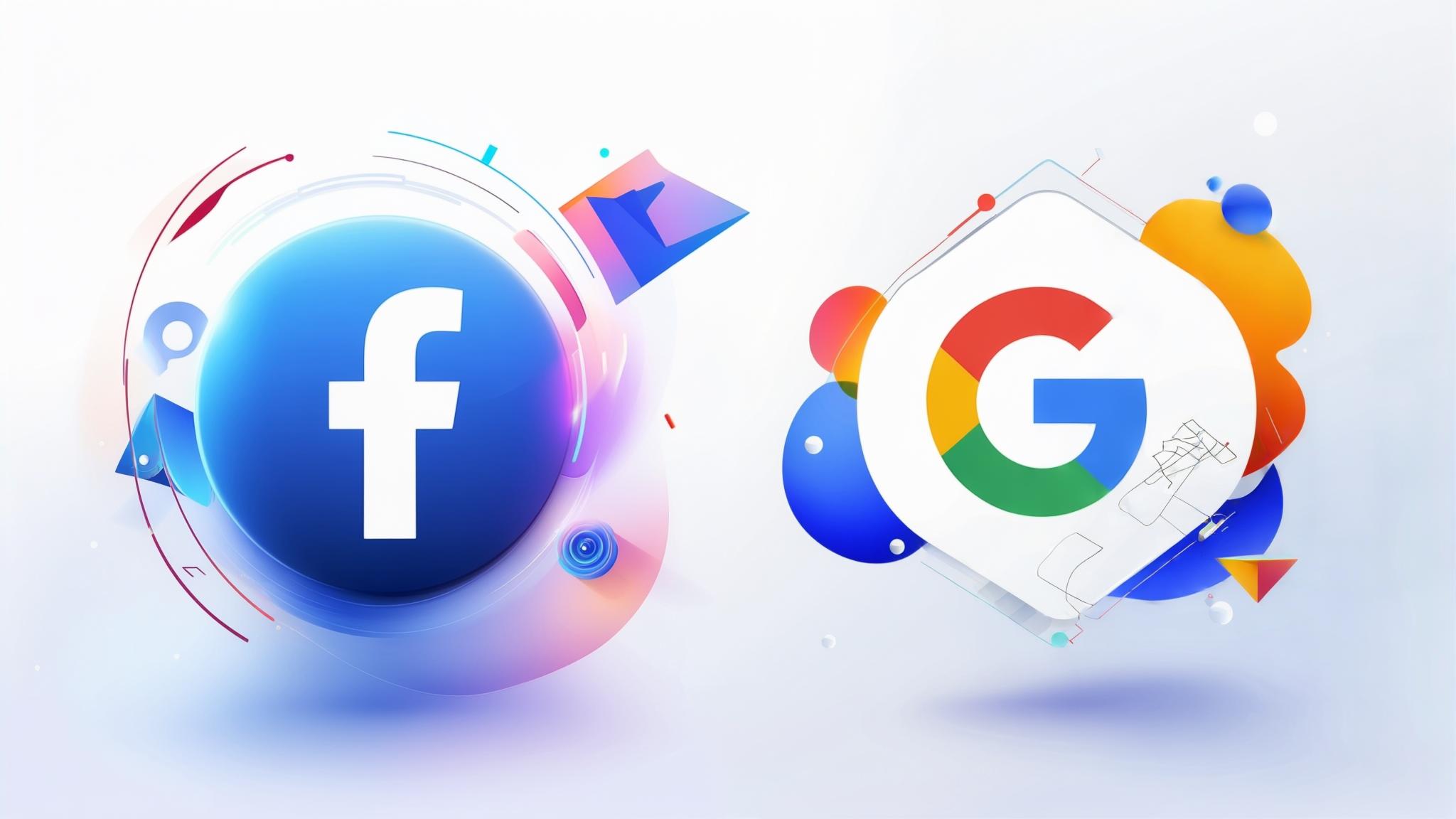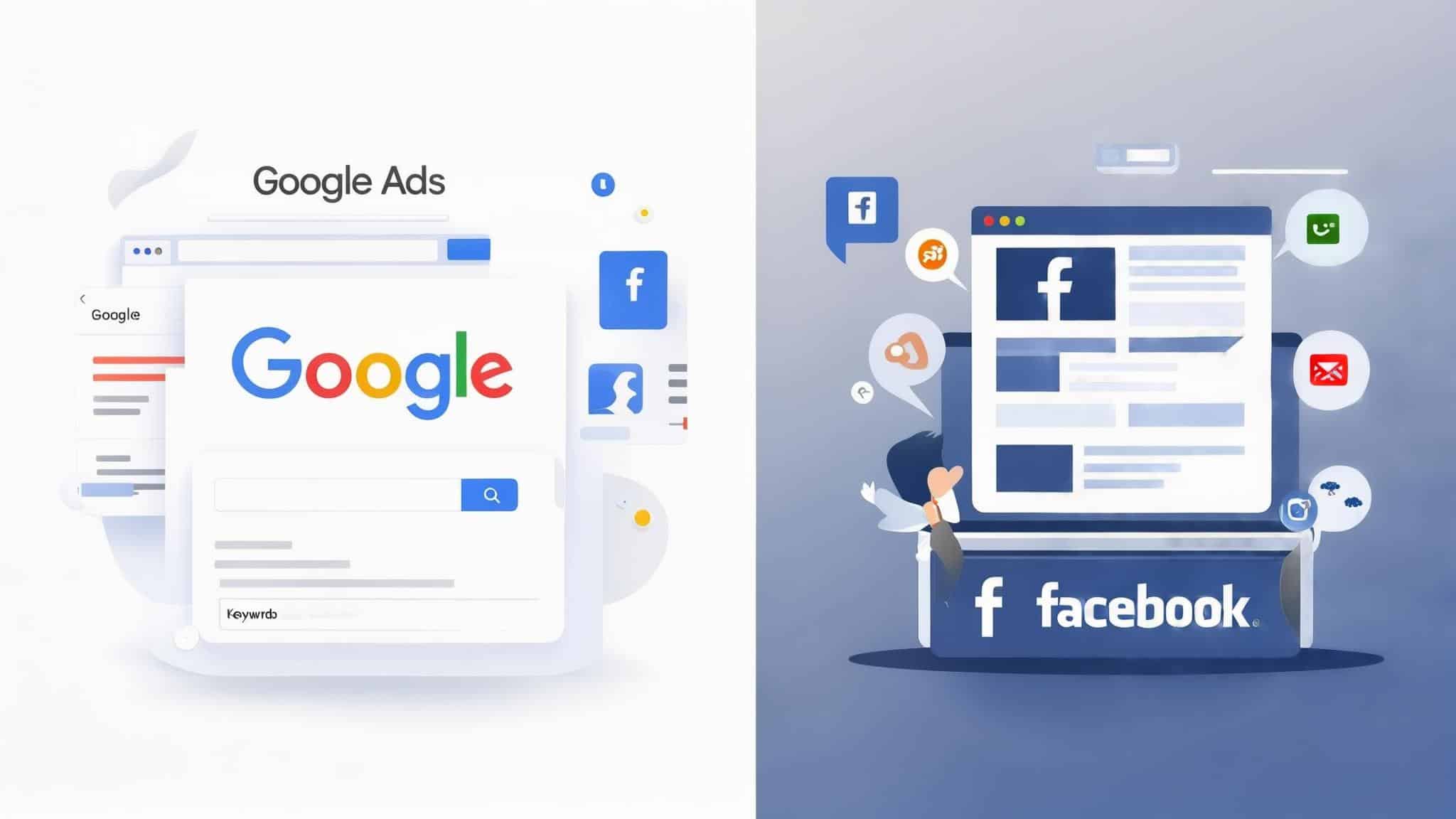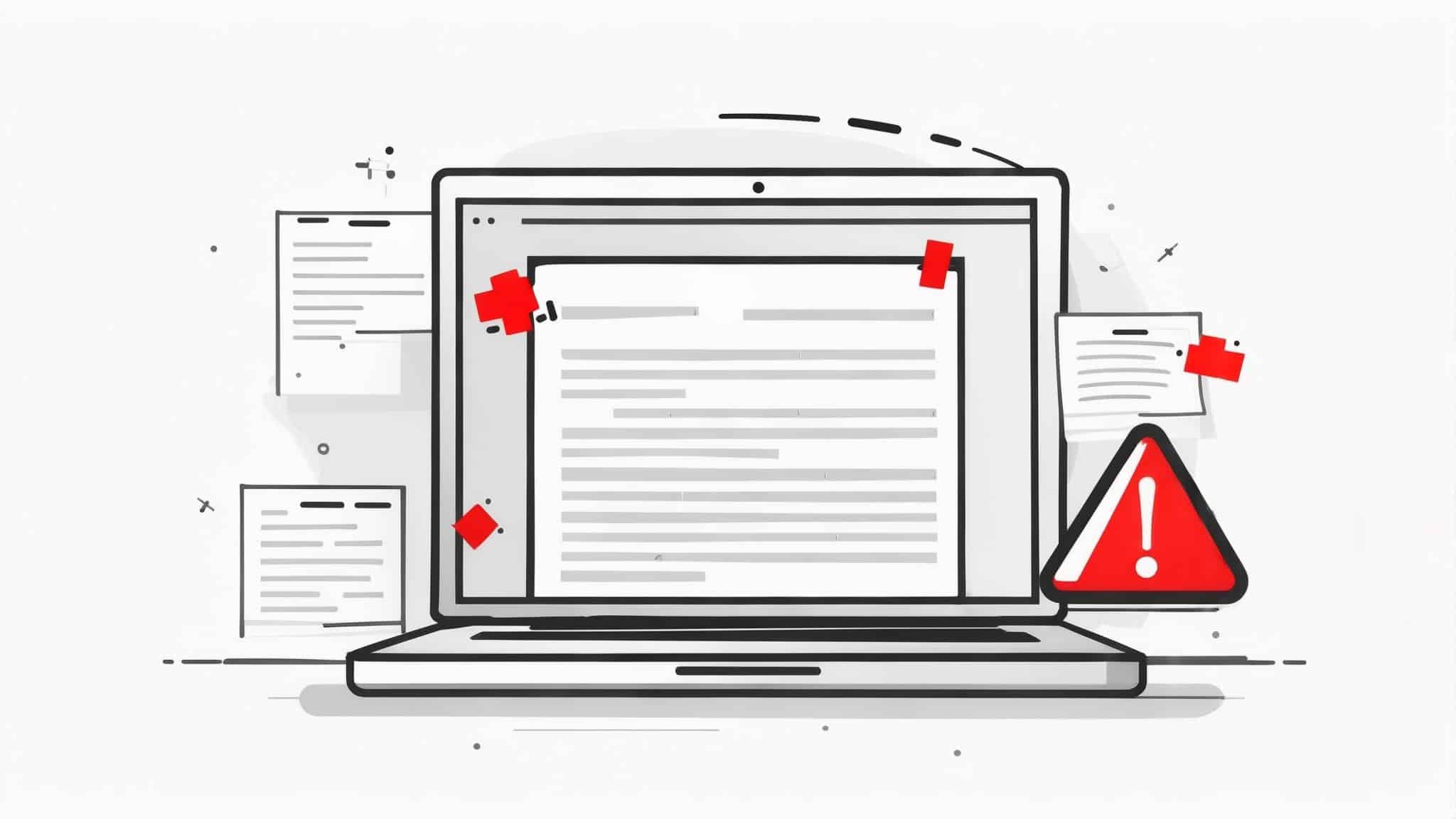
Best ChatGPT Prompts for Google Ads and Facebook Ads
Stéphanie
March 07, 2025
In a world where online advertising is becoming increasingly competitive, crafting high-performing ads for Google Ads and Facebook Ads is a real challenge. A good ad must grab attention, spark interest, and drive action in just a few seconds. However, finding the right words and testing different approaches can be time-consuming and costly.This is where ChatGPT comes into play. With artificial intelligence, it is now possible to generate engaging, optimized, and audience-specific ad copies in just a few moments. Whether you are a marketing specialist, an entrepreneur, or a campaign manager, using well-crafted prompts can help you maximize your advertising performance and improve your return on investment (ROI).
In this article, we will explore specific prompts for Google Ads and Facebook Ads, enabling you to create effective and impactful ads with ease.
🎯 1. Understanding the key differences between Google Ads and Facebook Ads
Why understanding these differences matters
In the world of digital marketing, choosing between Google Ads and Facebook Ads is a strategic decision that can significantly impact the performance of an advertising campaign. These two platforms dominate the online advertising market, but they operate on entirely different principles. Google Ads is based on user intent, where people actively search for solutions, while Facebook Ads relies on discovery and engagement. Understanding these differences is essential for crafting the right ad messages, selecting the best formats, and maximizing conversions.
Google Ads: Intent-based Advertising
Google Ads primarily operates on an intent-driven model. Users enter keywords to find solutions to their immediate needs. Ads must therefore be direct, informative, and precisely address the user's query.
-
Main formats: Search Ads (text ads), Display Ads (banners), Performance Max Ads (multi-format)
-
Primary objective: Respond to search intent and drive conversions
-
Copywriting strategy: Incorporate relevant keywords, highlight clear benefits, use direct calls to action
Facebook Ads: Engagement-based Advertising
Facebook Ads, on the other hand, relies on interest-based and behavioral targeting. Users are not actively searching for a product or service but are exposed to ads while browsing the platform. The goal is to capture their attention and encourage interaction with the content.
-
Main formats: Image & Video Ads, Carousel Ads, Lead Generation Ads
-
Primary objective: Generate engagement and increase brand awareness
-
Copywriting strategy: Storytelling, engaging and emotional tone, eye-catching visuals
Understanding these differences is crucial for tailoring ad messages and maximizing their impact.
Tailoring your strategy for maximum impact
In summary, Google Ads and Facebook Ads are not competitors but rather complementary tools. Google Ads helps reach users with clear purchasing intent, while Facebook Ads excels at generating brand awareness and engagement. By understanding these key differences, advertisers can strategically structure their campaigns and leverage the strengths of each platform to maximize ROI.
✨ 2. Best practices for Ad Copywriting
The importance of effective Ad Copywriting
A good ad copy is more than just a catchy phrase—it needs to grab attention, spark interest, create desire, and drive action. Whether on Google Ads or Facebook Ads, competition is fierce, and a small tweak in wording can make the difference between a successful campaign and a failed one. In this section, we will explore fundamental principles for writing compelling and persuasive ads.
1. Use a clear and persuasive structure
An effective ad typically follows a well-defined structure:
-
Hook: Immediately grab attention with a question, statistic, or strong promise.
-
Value Proposition: Highlight what makes your offer unique and relevant.
-
Call to Action (CTA): Encourage action with a clear invitation ("Try for free," "Download now," "Book your spot")
2. Address your target audience
A good ad message must be tailored to its audience. Ask yourself the right questions:
-
Who is my ideal customer?
-
What are their needs and pain points?
-
What language and tone resonate best with them?
For example, an ad for a SaaS product targeting businesses should adopt a professional tone and emphasize concrete benefits (time savings, increased productivity), whereas an ad for a beauty product might focus on emotion and aesthetics.
3. Incorporate social proof and urgency elements
Consumers trust reviews and recommendations more than mere marketing claims. Incorporating social proof can significantly enhance an ad’s credibility:
-
Customer testimonials
-
Satisfaction statistics
-
Certifications and trust badges
Similarly, creating a sense of urgency can prompt quicker action:
-
"Limited offer: 30% off until tonight!"
-
"Only 5 spots left!"
4. Continuously test and optimize
No ad is perfect from the start. It is crucial to test different variations to identify what works best. A/B testing allows experimentation with:
-
Different hooks
-
Various ad formats
-
CTA variations
By following these best practices, you increase your chances of crafting compelling and high-performing ad copies.
Effective copywriting is the key to advertising success
By applying these best practices, advertisers can significantly increase their chances of capturing attention and converting their audience. A/B testing remains an essential tool for refining messages and identifying what resonates best with users. A strong ad is ultimately one that delivers a clear, relevant, and engaging message tailored to the needs and expectations of its target audience.
🚨 3. Common copywriting mistakes to avoid
The cost of poor Ad Copy
Even the best advertising strategies can fail if the ad copy is ineffective. A poorly written ad can lead to low engagement, wasted budget, and missed opportunities. Understanding common copywriting mistakes allows marketers to refine their approach and create compelling ads that drive conversions.
1. Being too vague or generic
An ad copy that lacks specificity fails to capture attention. Avoid broad, overused phrases like “Best product for everyone” or “Great service at a great price”. Instead, focus on concrete benefits, unique selling points, and audience-specific messaging.
✅ Example of a strong copy: “Boost your productivity with our AI-powered time-tracking tool—trusted by 10,000+ freelancers and teams.”
2. Ignoring the target audience’s pain points
Ads that don’t address the audience's needs or challenges often go unnoticed. Effective copy should highlight a specific problem and position the product/service as the solution.
✅ Example of a strong copy: “Tired of spending hours managing invoices? Automate your finances with our one-click accounting software.”
3. Weak or missing Call to Action (CTA)
A great ad without a strong CTA is a wasted opportunity. Avoid vague CTAs like “Learn more” or “Check it out”. Instead, use action-driven language that clearly tells users what to do next.
✅ Example of a strong CTA: “Sign up today and get your first month free!”
4. Overloading Ads with too much information
Trying to say too much in an ad leads to confusion. Ads should be concise, focusing on one key message rather than overwhelming users with excessive details.
✅ Tip: Stick to the one-second rule—if the message isn’t clear within a second, it’s too complex.
5. forgetting to test and optimize
Many marketers create ads and leave them running without testing variations. A/B testing different headlines, CTAs, and formats helps determine what resonates best with the audience.
✅ Tip: Always test multiple versions of your ad and analyze performance metrics to optimize results.
Avoiding mistakes for high-impact Ads
Avoiding these common mistakes can drastically improve ad performance. By being specific, addressing audience pain points, using strong CTAs, keeping messages concise, and continuously testing, advertisers can create compelling and effective ads. Great copywriting is not just about creativity—it’s about strategy, clarity, and constant optimization. 🚀
🚀 You can also check out our blog post featuring the best prompts for copywriting
🤖 4. ChatGPT Prompts for Google Ads
Leveraging AI for Google Ads
Google Ads is a powerful platform, but crafting effective ads can be challenging. Thanks to AI, particularly ChatGPT, advertisers can now automate and enhance ad copywriting by generating texts tailored to different campaign types. Whether for Search Ads, Display Ads, or Performance Max campaigns, using the right prompts can help create high-impact messages in seconds.
4.1. Search Ads (Text-Only)
-
"Generate a Google Search ad for a [product/service] targeting [audience] that emphasizes [unique selling point]."
-
"Create three variations of a Google Search ad for [product/service] with different CTAs."
-
"Write a Google Search ad for [product/service] that includes the keyword [specific keyword]."
-
"Generate a Google ad for [product/service] that appeals to [audience pain point]."
-
"Create a short and compelling Google ad headline for [product/service]."
-
"Write a Google Search ad that focuses on [benefit] rather than features."
-
"Develop a Google ad with a sense of urgency for [product/service]."
-
"Create an ad variation that highlights a special offer or discount."
-
"Generate a Google Search ad targeting customers in [location]."
-
"Write a Google ad emphasizing social proof, using a customer testimonial."
4.2. Display Ads (Banner Text)
-
"Write an engaging tagline for a Google Display ad for [product/service]."
-
"Generate three variations of a Google Display ad for A/B testing."
-
"Create a Google Display ad headline that is short but impactful."
-
"Write a Display ad that conveys a luxury brand image for [product/service]."
-
"Generate ad copy for a banner ad promoting a limited-time deal."
-
"Write a Google Display ad focused on solving [customer pain point]."
-
"Create a Display ad emphasizing free shipping or other perks."
-
"Generate an ad that plays on emotions for [product/service]."
-
"Develop a banner ad that targets first-time customers with an incentive."
-
"Write a Display ad headline that includes a compelling CTA."
4.3. Performance Max Ads
-
"Generate a Performance Max ad for [product/service] that combines search, display, and video formats."
-
"Create a compelling ad copy for a Performance Max campaign targeting [audience]."
-
"Write a Performance Max ad that focuses on storytelling and engagement."
-
"Generate a set of ad variations optimized for multiple placements in Performance Max campaigns."
-
"Develop a Performance Max ad that emphasizes urgency and a limited-time offer."
-
"Write an AI-generated Performance Max ad highlighting a unique feature of [product/service]."
-
"Create a Performance Max ad tailored for mobile users and quick conversions."
-
"Generate ad text for a Performance Max campaign retargeting past website visitors."
-
"Develop a Performance Max ad that leverages customer testimonials and social proof."
-
"Write a Performance Max ad that incorporates a strong CTA for lead generation."
Maximizing Google Ads performance with ChatGPT
Using ChatGPT for ad creation goes beyond simply generating text—it can also help test different approaches, personalize messaging, and optimize campaigns based on performance data. By mastering prompt engineering, advertisers can unlock the full potential of AI to improve their results and save time.
📢 5. ChatGPT Prompts for Facebook Ads
Facebook Ads – A playground for creativity
Unlike Google Ads, where users actively search for solutions, Facebook Ads rely on interrupting the user’s scroll and capturing attention. AI becomes a major asset in generating engaging ad copies tailored to Facebook's diverse formats, such as image ads, video ads, and carousel ads. The right prompts can help marketers maximize Facebook’s advertising algorithm by creating compelling and highly targeted messages.
5.1. Image & Video Ads
-
"Create a Facebook ad caption for a video ad promoting [product/service]."
-
"Write an engaging text for a Facebook image ad targeting [audience]."
-
"Generate a short script for a 15-second Facebook video ad."
-
"Write a Facebook ad that tells a story about [product/service]."
-
"Create an ad for [product/service] that focuses on emotional appeal."
-
"Develop ad copy that encourages user engagement (likes, shares, comments)."
-
"Generate an ad variation for a retargeting campaign."
-
"Write a Facebook ad that includes a customer testimonial."
-
"Create an ad targeting a seasonal or holiday promotion."
-
"Generate ad copy that highlights a giveaway or contest."
5.2. Carousel Ads
-
"Create a sequence of text variations for a Facebook Carousel ad."
-
"Write engaging copy for each image in a Carousel ad for [product/service]."
-
"Generate a Carousel ad that tells a step-by-step story."
-
"Write ad text focusing on different benefits of [product/service]."
-
"Develop a Carousel ad with a clear and compelling CTA."
-
"Create a Facebook ad targeting users who abandoned their cart."
-
"Generate a Carousel ad emphasizing a product launch."
-
"Write ad text that builds curiosity across multiple slides."
-
"Develop a Facebook Carousel ad that highlights multiple customer testimonials."
-
"Create a Facebook ad designed to showcase before-and-after results."
5.3. Lead Generation Ads
-
"Generate a Facebook Lead Generation ad for [product/service] targeting [audience]."
-
"Write a compelling headline for a Facebook Lead Ad that encourages sign-ups."
-
"Create ad copy for a lead form ad offering a free resource (e.g., eBook, webinar)."
-
"Generate a Facebook Lead Ad emphasizing a special offer or discount for new subscribers."
-
"Develop an engaging CTA for a Lead Generation campaign in [industry]."
-
"Write a short and persuasive Facebook ad promoting a consultation booking."
-
"Create an ad variation that highlights social proof and testimonials."
-
"Generate a Lead Ad focused on solving a common customer pain point."
-
"Develop an A/B test version of a Facebook Lead Generation ad."
-
"Write a Facebook ad targeting warm leads to encourage conversion."
ChatGPT as a strategic tool for high-performing Facebook Ads
By leveraging AI and refining prompts, advertisers can adapt their messaging to different audiences and campaign objectives. Personalization and emotional appeal play a crucial role in the effectiveness of Facebook Ads. By combining these elements with continuous A/B testing, marketers can improve ad performance and achieve a higher return on investment.
📈 6. Maximizing Ad Performance with AI
Incorporating AI, especially ChatGPT, into your ad strategy goes beyond just generating copy. AI can play a significant role in optimizing performance, analyzing results, and continually improving ads. By reviewing performance metrics, AI can suggest adjustments to improve engagement and conversion rates. This includes A/B testing variations of your ad copy, refining calls-to-action (CTAs), or altering messaging based on audience behavior. For example, if an ad is underperforming, ChatGPT can recommend more urgent language or highlight different benefits to better resonate with the target audience.
AI-powered tools also help by testing different variations of the ad copy across multiple channels, ensuring that the best-performing version is pushed to a broader audience. This data-driven approach not only saves time but ensures a more effective ad campaign.
6.1 Real-World examples of ChatGPT-Generated high-Performing Ads
To illustrate the power of AI in creating impactful ads, consider the difference between a basic ad copy and one optimized with ChatGPT. Here’s an example:
- Before: "Sign up for our digital marketing course today!"
- After using ChatGPT: "Join our exclusive digital marketing course—limited spots available for a 30% discount!"
The enhanced version leverages urgency and a sense of exclusivity, which is often more engaging. This small change can make a huge difference in the performance of the ad.
Similarly, testing different prompts to generate multiple versions of ad copy can help pinpoint the most effective wording, style, and tone that speak directly to your audience’s needs. This iterative process ensures that your ads continue to evolve based on real-time feedback and performance metrics.
6.2 Keeping Up with Trends in Digital Advertising
As digital advertising continues to evolve, staying ahead of trends is essential. Current advertising trends like conversational tone, personalized messages, and story-driven content are becoming increasingly popular. ChatGPT can easily adapt to these trends, making it easier for marketers to stay relevant. By using prompts that incorporate emotional storytelling or conversational language, advertisers can create more engaging and relatable content for their target audience.
6.3 Using ChatGPT for Full Campaign Creation
ChatGPT isn't limited to ad copywriting; it can assist in creating a full advertising campaign from start to finish. From designing the messaging for Search Ads, Display Ads, and Performance Max campaigns to selecting the best CTAs and targeting options, ChatGPT helps structure every step of the campaign. For example, when creating a new ad, marketers can input a detailed prompt with audience demographics, product features, and desired outcomes, and ChatGPT will provide tailored ad copy that aligns with campaign goals.
6.4 Refining Prompts for Better Ad Results
To get the best possible results from ChatGPT, refining your prompts is key. Vague or general instructions may lead to generic responses that don’t resonate with your audience. By being specific, marketers can ensure their ads are more effective. For example, instead of saying, "Create an ad for a marketing tool," a more detailed prompt would be: "Generate a Google Search ad for a time-tracking SaaS product targeting freelancers, focusing on ease of use and time-saving benefits."
AI and future trends in digital advertising
Digital advertising is evolving rapidly, and artificial intelligence (AI) plays a central role in this transformation. One of the key trends in advertising is the integration of behavioral data and user insights to refine ads and maximize their effectiveness. Platforms like Google Ads and Facebook Ads generate vast amounts of data on user behavior, such as interactions with ads, searches, content engagement, and purchases. This data is a goldmine for personalizing and optimizing advertising campaigns.
Using behavioral Data to refine Ads
AI, including tools like ChatGPT, can integrate into this process by analyzing behavioral data to create more relevant and targeted ads. For example, by analyzing behavioral data, AI can identify specific audience segments that interact more with certain types of content or show strong purchase intent.
Here are some practical examples of how AI uses this data to create ads:
-
Personalization based on browsing history: If a user has recently viewed articles or searched for a particular product, ChatGPT can generate ads that address them using the terms and expressions they’ve shown interest in. For instance, a user who searched for “best smartphone 2025” might see a Google Ads ad showcasing a phone with similar features to the products they’ve researched.
-
Creating messages based on engagement behavior: If a user regularly interacts with video content or carousel-style ads, AI can adjust the ad creatives to match this format. For example, ChatGPT could generate shorter, more impactful scripts for Facebook video ads, based on the user’s previous interactions.
-
Real-time response to audience trends: AI also enables instantaneous reactions to changes in user behavior. For example, if a trend emerges (like a new feature in a product or a new season), ChatGPT can adjust the ad messaging to align with the evolving demand. This helps maintain relevance and maximize ad impact.
Advanced Insights for Ad Optimization
In addition to behavioral data, AI can analyze predictive insights that allow for a deeper understanding of user intent before they even act. For instance, by combining demographic and behavioral data, AI can predict which ad type will have the most significant impact on a specific user group.
This could translate into actions such as:
-
Anticipating user needs: If AI detects that a user is about to make a purchase decision (based on pages viewed or time spent on a site), it can generate a very targeted and urgent ad, such as “Last chance to get 20% off [product]!”
-
Adjusting tone based on target audience: AI can also adjust the tone and style of messages based on user preferences. For example, an older user may respond better to a reassuring message, while a younger user might react more to a laid-back, humorous approach. ChatGPT can adapt ad content based on behavioral and emotional cues, thereby improving engagement.
Continuous optimization through AI Insights
One of the main advantages of AI in digital advertising is its ability to continuously test and refine ad messages based on feedback. For example, ChatGPT can generate multiple versions of an ad, which are then tested through A/B experiments. AI analyzes the performance of each version in real-time and automatically adjusts the elements that are not performing well, while highlighting those that drive more engagement.
This allows advertisers to:
-
React in Real-time: If an ad variation isn’t generating the expected engagement, AI can suggest new adjustments to the text, visuals, or format based on user insights.
-
Hyper-personalization at Scale: AI enables hyper-personalization of ads at a scale that was previously unattainable. For instance, an advertiser can create thousands of versions of an ad, each specifically tailored to a particular audience segment, all without manual intervention.
Future Trends: Growing AI Integration in Ad Campaigns
As AI continues to advance, it’s expected to play an even bigger role in optimizing ad campaigns. Here are some trends to watch for in the coming years:
-
Conversational advertising: The use of chatbots and virtual assistants like ChatGPT in ads could become the norm. These tools can engage directly with users in real-time, answer their questions, and generate personalized conversations that increase conversion chances.
-
Automated Ad creation based on deep behavioral insights: In the future, AI might be able to create ads that dynamically adapt to real-time user interactions, adjusting not only the text but also the visuals and formats based on audience preferences and context.
-
Hyper-Personalized Ad Content Creation: AI will allow brands to personalize ads at a level never seen before, creating messages that are completely tailored to each user based on their behavior, preferences, and even their mood detected through behavioral signals.
In conclusion, AI is reshaping how advertisers create, manage, and optimize their campaigns. By combining behavioral data analysis with AI, advertisers now have unprecedented capabilities to refine their ads, increase engagement, and improve ROI. The future of digital advertising will be marked by increased personalization, real-time responsiveness, and continuous optimization through AI.
🚀 7. Advanced AI Strategies for better Ad Copy
Going Beyond the Basics with AI
AI is not just a tool for generating ad copy—it enables advertisers to refine, test, and personalize their campaigns at scale. A well-crafted prompt is just the beginning; continuous optimization and data-driven insights can significantly enhance ad performance. In this section, we’ll explore advanced techniques for refining prompts, personalizing messages, and maximizing ad effectiveness through AI-driven strategies.
7.1. Refining prompts for better responses
AI-generated content is only as good as the prompts used to create it. To refine prompts and obtain higher-quality responses, consider the following strategies:
-
Be specific: Instead of "Generate an ad for my product," use "Create a Google Search ad for a time-tracking SaaS targeting freelancers, emphasizing ease of use and productivity."
-
Define the format: Indicate whether you need a short headline, a complete ad, or multiple variations.
-
Specify the tone: If you want a formal, playful, or emotional tone, include it in the prompt.
-
Provide context: Add details like audience demographics, pain points, or key selling points to make responses more relevant.
-
Iterate and tweak: Run multiple variations of a prompt and refine based on the output.
7.2. The Importance of tone and personalization
Tone and personalization play a crucial role in the effectiveness of ad copy. Depending on your audience, the messaging should resonate with their expectations and emotions.
-
Formal vs. casual tone: A B2B tech product ad should be professional and data-driven, while a lifestyle brand might benefit from a friendly, conversational approach.
-
Personalization using audience insights: If targeting millennials, emphasize experiences and authenticity. For an older audience, focus on trust and reliability.
-
Using dynamic language: Phrases like "Join 10,000+ happy customers" or "Your solution for hassle-free scheduling" make the message feel more tailored.
7.3. Examples of adjustments for better Ad Performance
Here are some examples of how minor changes in prompts can improve ad performance:
Example 1: Increasing urgency
-
Basic prompt: "Write a Google Search ad for an online course on digital marketing."
-
Improved prompt: "Create a high-converting Google Search ad for an online digital marketing course, emphasizing limited-time enrollment and a 30% discount."
Example 2: Enhancing emotional appeal
-
Basic prompt: "Generate a Facebook ad for a fitness app."
-
Improved prompt: "Write a Facebook ad for a fitness app that inspires users to start their transformation journey, highlighting real success stories and an easy-to-follow program."
Example 3: Targeting a specific audience
-
Basic prompt: "Create an ad for a meal delivery service."
-
Improved prompt: "Generate an ad for a meal delivery service designed for busy professionals who want healthy, chef-prepared meals without the hassle of cooking."
AI as a Game-Changer for High-Performing Ads
By combining well-structured prompts with advanced optimization strategies, advertisers can go beyond basic AI-generated suggestions. The future of digital advertising lies in leveraging AI to fine-tune messaging, understand consumer behavior, and implement ongoing testing. Those who master these techniques will gain a significant competitive edge in the advertising landscape.






